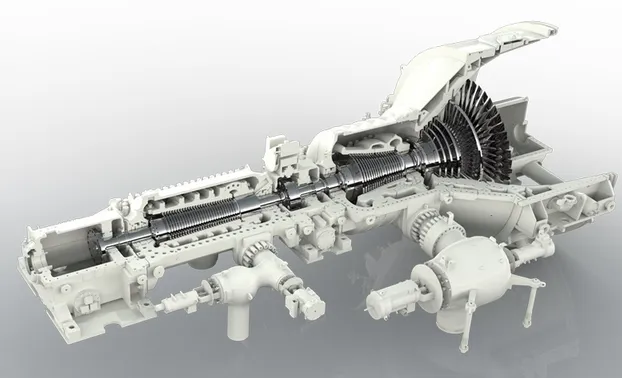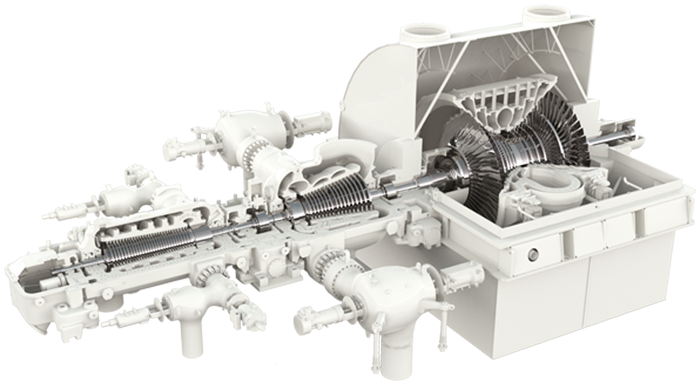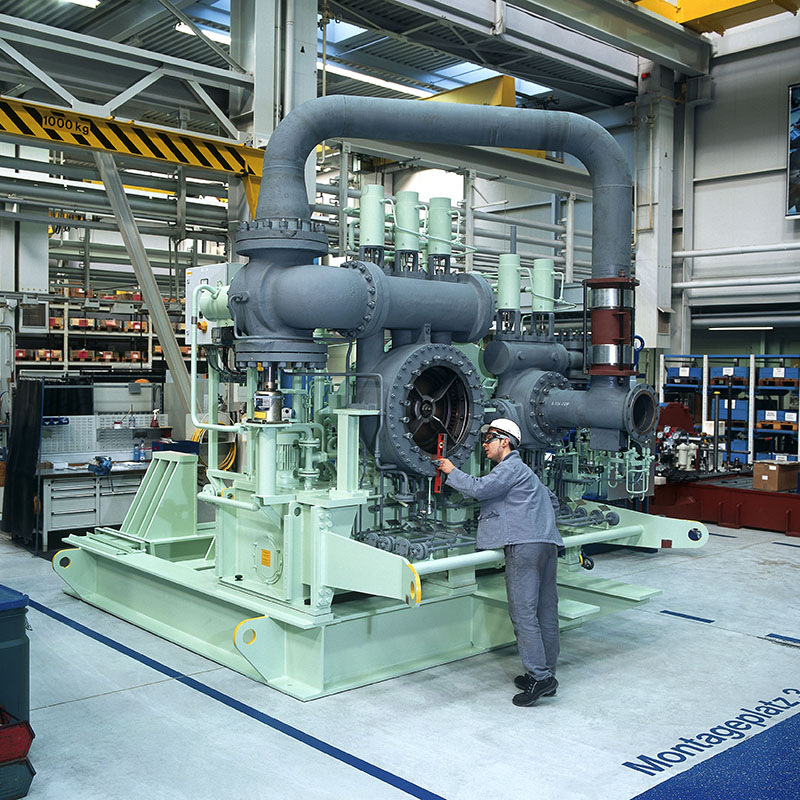FREQUENT QUESTIONS & ANSWERS - SPECIAL STEAM TURBINES

UPGRADE
UPDATE
What is the purpose of upgrading a special steam turbine? Upgrading a special steam turbine can improve its reliability, maintainability, availability, safety, quality control, and efficiency, leading to increased plant productivity and reduced downtime and maintenance costs.
What are some common upgrades for special steam turbines? Common upgrades for special steam turbines include new control systems, improved instrumentation and monitoring, upgraded blade designs, improved seals and bearings, and increased efficiency through component optimization.
How do I know if my special steam turbine needs an upgrade? If your special steam turbine is experiencing frequent breakdowns, reduced efficiency, or increased maintenance costs, it may be a candidate for an upgrade. Additionally, if you are looking to increase the capacity or performance of your plant, upgrading your special steam turbine may be a necessary step.
What factors should I consider when planning a special steam turbine upgrade? Factors to consider when planning a special steam turbine upgrade include the age and condition of the turbine, the specific performance goals of the upgrade, the available budget and timeline, and any regulatory or safety considerations.
How long does a special steam turbine upgrade typically take? The timeline for a special steam turbine upgrade can vary depending on the extent of the upgrade and the availability of necessary equipment and personnel. Generally, upgrades can take several months to a year to complete.
How can I ensure a successful special steam turbine upgrade? To ensure a successful special steam turbine upgrade, it is important to work closely with an experienced engineering and design team, carefully plan the upgrade with input from all relevant stakeholders, and rigorously test and commission the upgraded turbine before returning it to service. Ongoing monitoring and maintenance can also help ensure the long-term success of the upgrade.
Why should I update my special steam turbine? Answer: Updating your special steam turbine can improve reliability, maintainability, availability, safety, quality control, and efficiency, which can help avoid critical failures or unscheduled shutdowns and ensure your industrial plant runs smoothly.
What kind of updates can be done for a special steam turbine? Answer: Possible updates may include improving the materials or coatings used, upgrading control systems or sensors, installing new blades or rotors, or optimizing the steam flow path.
How much will an update for a special steam turbine cost? Answer: The cost of an update for a special steam turbine will depend on the specific updates needed and the complexity of the turbine. It is best to consult with a manufacturer or engineering firm for a cost estimate.
How long will an update take for a special steam turbine? Answer: The timeline for an update will depend on the extent of the updates and the availability of parts and equipment. A manufacturer or engineering firm can provide an estimate of the timeline.
Will updating my special steam turbine affect its performance? Answer: Updating your special steam turbine should improve its performance and efficiency, but it is important to ensure that the updates are done correctly and the turbine is properly calibrated and tested after the updates are complete.
How often should I update my special steam turbine? Answer: The frequency of updates will depend on the specific turbine and the operating conditions it is exposed to. Regular maintenance and monitoring can help identify when updates may be necessary.

UPRATE
RERATE
Q: What is a steam turbine uprate and why is it needed? A: A steam turbine uprate is a process of increasing the power output of a steam turbine beyond its original design capacity. It is needed when the power demand of an industrial plant exceeds the capacity of the existing steam turbine, or when the plant’s operational needs change.
Q: How is steam turbine uprate achieved? A: Steam turbine uprate can be achieved by improving the efficiency of the steam turbine or by modifying its components, such as increasing the size of the blades or upgrading the control system.
Q: What are the benefits of steam turbine uprate? A: Steam turbine uprate can improve the reliability, maintainability, availability, safety, and efficiency of the steam turbine. It can also extend the useful life of the steam turbine and reduce the need for capital investments in new equipment.
Q: What are the risks associated with steam turbine uprate? A: The risks associated with steam turbine uprate include potential damage to the turbine due to increased stresses and temperatures, increased maintenance requirements, and reduced reliability if the uprate is not properly designed and implemented.
Q: How can the risks of steam turbine uprate be mitigated? A: The risks of steam turbine uprate can be mitigated by conducting thorough engineering studies, selecting appropriate equipment and materials, implementing appropriate monitoring and control systems, and conducting regular maintenance and inspections. It is important to work with experienced and knowledgeable suppliers and contractors who have a proven track record in steam turbine uprate projects.
What is a steam turbine rerate? A steam turbine rerate involves the modification of an existing steam turbine to increase its power output or efficiency.
What are the benefits of a steam turbine rerate? The benefits of a steam turbine rerate include increased power output, improved efficiency, reduced maintenance costs, and extended equipment life.
What factors should be considered before a steam turbine rerate? Factors that should be considered before a steam turbine rerate include the condition of the existing turbine, the cost of the rerate, the expected return on investment, and the impact on overall plant operations.
What modifications are typically made during a steam turbine rerate? Modifications made during a steam turbine rerate may include upgrading the turbine blades, replacing worn parts, and improving the control systems.
Can a steam turbine rerate be performed on any turbine? Not all steam turbines are suitable for a rerate. Factors such as the condition of the existing turbine, the design of the turbine, and the availability of replacement parts may limit the feasibility of a rerate.
How long does a steam turbine rerate typically take? The duration of a steam turbine rerate can vary depending on the scope of the work and the condition of the existing turbine. In some cases, a rerate may be completed in a matter of weeks, while in other cases it may take several months.
What is the expected return on investment for a steam turbine rerate? The expected return on investment for a steam turbine rerate will vary depending on factors such as the cost of the rerate, the increase in power output, and the resulting savings in fuel and maintenance costs.
How often should a steam turbine be rerated? The frequency of steam turbine rerates will depend on the condition of the existing turbine, the operating environment, and the need for increased power output or efficiency. In general, a steam turbine may be rerated every 10-15 years.
REVAMP
Q1: What is REVAMP, and how does it benefit special steam turbines? A1: REVAMP stands for Retrofits, Upgrades, Enhancements, and Modernizations of Plants. It involves implementing modifications and upgrades to special steam turbines to improve their reliability, performance, and safety. REVAMP projects can enhance turbine efficiency, increase power output, reduce energy consumption, and extend the operational life of the equipment.
Q2: What are some common modifications and upgrades made during a special steam turbine REVAMP project? A2: Common modifications and upgrades in special steam turbine REVAMP projects include turbine blade and nozzle redesigns, steam path modifications, control system upgrades, advanced monitoring and diagnostic systems, safety system enhancements, and environmental compliance measures.
Q3: How can REVAMP improve the reliability of special steam turbines? A3: REVAMP enhances the reliability of special steam turbines by addressing potential failure points and implementing upgrades. This includes upgrading components, optimizing steam flow, implementing advanced monitoring and diagnostic systems, and improving safety systems to prevent critical failures and enhance overall reliability.
Q4: Can REVAMP projects improve the performance of existing special steam turbines? A4: Yes, REVAMP projects can significantly improve the performance of existing special steam turbines. Upgrades such as turbine blade and nozzle redesigns, steam path modifications, and control system enhancements can increase efficiency, power output, and overall turbine performance.
Q5: Is REVAMP only applicable to existing special steam turbines, or can it be implemented in new projects as well? A5: REVAMP strategies can be applied to both existing special steam turbines and new projects. In new projects, REVAMP principles can be incorporated from the beginning, considering the latest technologies and design enhancements to ensure optimum reliability, performance, and safety.
Q6: How does REVAMP help in avoiding critical failures in special steam turbines? A6: REVAMP helps in avoiding critical failures by proactively addressing potential issues through upgrades and enhancements. By implementing advanced monitoring and diagnostic systems, improving safety systems, and upgrading critical components, operators can detect early warning signs, prevent failures, and ensure the reliability of the turbine.
Q7: Are there any safety considerations in special steam turbine REVAMP projects? A7: Yes, safety considerations are an important aspect of REVAMP projects for special steam turbines. Upgrades may include the installation of improved safety systems, emergency shutdown mechanisms, overspeed protection, and explosion-proof designs to ensure safe and reliable operation.
Q8: Can REVAMP projects help in complying with environmental regulations? A8: Yes, REVAMP projects often include measures to ensure compliance with environmental regulations. Upgrades may involve improving energy efficiency, reducing emissions, and integrating environmental control technologies to minimize the environmental impact of turbine operations.
Q9: How long does a typical special steam turbine REVAMP project take? A9: The duration of a special steam turbine REVAMP project can vary depending on the scope and complexity of the upgrades. It can range from several weeks to months, considering factors such as engineering design, procurement, installation, and commissioning.
Q10: What are the potential cost savings associated with special steam turbine REVAMP projects? A10: Special steam turbine REVAMP projects can lead to cost savings through improved efficiency, reduced maintenance requirements, increased power output, and optimized operation. These factors contribute to lower energy consumption, reduced downtime, and improved overall performance, resulting in significant cost savings over the operational life of the turbine.

